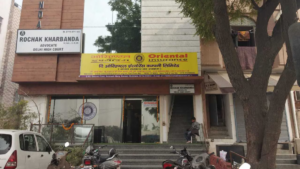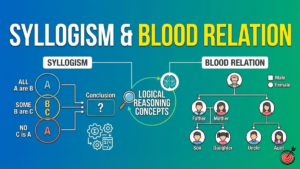Q1. Statements: All google are mozilla.
Some mozilla are opera.
No opera are safari.
Conclusion: (i) Some mozilla are not safari
(ii) Some mozilla being safari is a possibility
(iii) Some google are not safari
(a) Only (i) follows
(b) Only (ii) and (iii) follow
(c) Only (i) and (ii) follow
(d) All follow
(e) None of these
Q2. Statements: Some laptop are mobile.
Some mobile are desktop.
All desktop are Android.
No desktop is tablet.
Some tablets are mobile.
Conclusion: (i) Some mobile are not tablets
(ii) Some mobile are Androids
(iii) Some Androids are desktop
(a) Only (i) follows
(b) Only (ii) and (iii) follow
(c) Only (i) and (ii) follow
(d) All follow
(e) None of these
Q3. Statements: All perk are munch.
Some munch are not Dairy milk.
No Dairy milk is a Kitkat.
Some Kitkats are munch.
No Kitkat is galaxy.
Conclusion: (i) All perk are galaxys.
(ii) Some munch being Dairy milk is a possibility.
(iii) All perk being Dairy milk is a possibility.
(a) Only (i) follows
(b) Only (ii) and (iii) follow
(c) Only (i) and (ii) follow
(d) All follow
(e) None of these
Q4. Statements: All tall are short.
All short are fat.
All fat are thin.
Some thin is slow.
No fat is fast.
Some fast are thin.
Conclusion: (i) All slow being fast is a possibility
(ii) Some fat are slow.
(iii) Some fast being tall is a possibility
(a) Only (i) follows
(b) Only (ii) and (iii) follow
(c) Only (i) and (iii) follow
(d) All follow
(e) None of these
Q5. Statements: All Sikkim are Assam.
No Sikkim are Manipur.
All Manipur are Meghalaya.
Some Meghalaya are Assam.
No Assam are Nagaland.
Conclusion: (i) Some Meghalaya are Nagaland
(ii) Some Meghalaya are not Manipur
(iii) Some Meghalaya are not Nagaland
(a) Only (i) follows
(b) Either (i) or (ii) and (iii) follow
(c) Either (i) or (iii) and (ii) follow
(d) All follow
(e) None of these
Directions (6-10): Study the information carefully and answer the questions given below.
Seven persons are living in a seven floors building namely J, K, L, M, N, O and P but not necessary in the same order. They belong to different cities of India viz. Shimla, Agra, Meerut, Jaipur, Kanpur, Delhi and Rewa but not necessary in the same order. The ground floor is numbered 1, then the next floor is numbered 2 and till numbered 7.L sits on one of the odd number floors below the floor number 4. The person who lives on 4th floor belongs to Kanpur and L does not belong to Shimla and Delhi. The person who belongs to Meerut lives on an even number floor but not on the top floor. There are two persons live between L and K. J belongs to Delhi and lives on an odd numbered floor but not on the lowermost floor. There is only one person lives between K and O who does not belong to Meerut. There are three persons live between the person who belongs to Meerut and the person who belongs to Jaipur. The person who lives on topmost floor does not belong to Shimla. There is only one person lives between L and M who belongs to Rewa and lives below the person who belongs to Kanpur. There is only one person lives between P and the person who belongs to Kanpur. P lives below the person who belongs to Kanpur and P does not belong to Jaipur. There are same number of persons who live between K and O and between K and P.
Q6. On which floor does L live?
(a) Third
(b) Fourth
(c) Fifth
(d) First
(e) Seventh
Q7. How many floors are below the floor on which N lives?
(a) Three
(b) Four
(c) Five
(d) Six
(e) Seven
Q8. Who among the following lives on the second floor when all the persons are arranged alphabetically from top to bottom?
(a) K
(b) M
(c) N
(d) O
(e) P
Q9. N belongs to which of the following city?
(a) Agra
(b) Shimla
(c) Kanpur
(d) Rewa
(e) Meerut
Q10. Which of the following is true regarding O?
(a) O belongs to Agra and lives on 4th floor
(b) O belongs to Shimla and lives on 8th floor
(c) O belongs to Meerut and lives on 4th floor
(d) O belongs to Kanpur and lives on 7th floor
(e) None of these.
Directions (11-15): Study the information carefully and answer the questions given below.
Now, in each of the following questions assuming the given statements to be true, find which of the conclusions given below them are definitely true.
Q11. Statements: A > N, S ≥ N, S > W, W ≤ R
Conclusions: I. R ≥ A II. S > R
III. S > A IV. W ≤ A
(a) Only I and II are true
(b) Only II, III and IV are true
(c) None is true
(d) All I, II, III and IV are true
(e) None of these
Q12. Statements: D < E, E ≤ T, T = C, C < A
Conclusions: I. D < A II. C ≤ D
III. A > E IV. T < A
(a) Only I, III and IV are true
(b) Only I, II and IV are true
(c) Only I, II and III are true
(d) Only I and III are true
(e) All I, II, III and IV are true
Q13. Statements: O ≥ B, B = S, S < E, E ≤ R
Conclusions: I. S ≤ O II. R > S
III. B < R IV. B < E
(a) Only I and II are true
(b) Only III is true
(c) Only I, III and IV are true
(d) All I, II, III and IV are true
(e) Only III and IV are true
Q14. Statements: D ≤ S, S > P, P ≥ I, P = T
Conclusions: I. P < D II. P ≥ T
III. T < S IV. I ≤ D
(a) Only I and III are true
(b) Only III is true
(c) Only III and IV are true
(d) Only II, III and IV are true
(e) Only I, III and IV are true
Q15. Statements: U = N, N ≥ F, F ≥ A, A > R
Conclusions: I. A = U II. N > R
III. R = U IV. U > A
(a) Only II is true
(b) Only I and II are true
(c) Only I, II and IV are true
(d) Only III and IV are true
(e) Only II and either I or IV is true






 OICL Assistant Regional Language Test Sc...
OICL Assistant Regional Language Test Sc...
 PNB LBO Admit Card 2025 Out at pnb.bank....
PNB LBO Admit Card 2025 Out at pnb.bank....
 Most Important Syllogism & Blood Rel...
Most Important Syllogism & Blood Rel...








